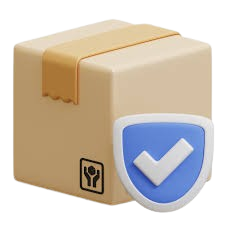The space-saving reset busy families swear by — and how to actually make it stick. You’re standing at the sink with a pile of lunchboxes, a homework sheet, and no flat surface to set anything down. That small daily pinch—no prep space, no home for the things you reach for most—adds up into chaotic evenings. For modern families, smart kitchen storage isn’t decorative: it’s survival.
Busy families are rethinking kitchen storage — and space-saving solutions matter now
With tighter budgets, smaller homes, and full schedules, families are choosing tools that prioritize function and calm. Minimalist moms swear by stackable systems and neutral tones that reduce visual clutter; at the same time, space-saving picks (think vertical racks and slim pull-outs) are trending as back-to-school season and busy evenings return. This is less about perfection and more about designing small, reliable wins that free time and reduce stress.
The home-life connection
- Messy counters: reduce usable prep space and make weeknight meals take longer
- Overstuffed cabinets: hide dishes and tools you actually need, leading to wasted time
- Unlabeled storage: creates duplicate purchases and the “where did I put that?” scramble
- No zones: makes family routines harder—snacks, school gear, and cookware all fight for the same space
Why this matters for women 30+ managing family flow
By your 30s and beyond, most women carry the mental load of meal planning, school logistics, and household decisions. Add small living spaces and busy schedules, and the invisible labor becomes visible in burned-out evenings. Streamlined storage reduces friction: fewer decisions each day, more predictable routines, and a home that supports—not fights—family rhythms. You don’t need a whole remodel; you need clear places for the things that matter.
Try This at Home: 4-Point Reset
- Declutter in zones: One drawer or shelf at a time—remove duplicates, donate items you haven’t used in six months.
- Use family rhythms: Set a weekly tidy hour (10–15 minutes) after dinner when everyone tackles one micro-task.
- Visual calm: Choose matching containers or neutral tones so open shelves read as calm instead of chaotic.
- Keep it visible: Store daily items (lunchboxes, snacks, keys) at eye-level or in labeled baskets so habits form automatically.
How Momamoma Can Help
Designed for real life, Momamoma offers home tools that blend beauty, function, and family needs.
- Space-saving organizers—pull-out racks, vertical dividers, and tiered shelves
- Neutral-toned kitchen tools that reduce visual clutter and coordinate easily
- Easy-to-clean essentials built for daily wear and busy routines
- Curated collections that simplify choices so you spend less time shopping and more time living
FAQs
What’s the easiest way to start organizing my kitchen?
Begin with a single high-use zone—like the snack drawer or the under-sink cabinet. Pull everything out, discard expired items, and group remaining items into functional bins. Stackable or clear containers help you see, not guess.
How do I build a weekly storage routine with kids?
Make it a 10-minute family beat: assign a simple task (clear the homework zone, return lunchboxes, wipe the counter), use a timer, and celebrate completion with a small reward like choosing dessert or a family song.
What are the best space-saving organizers for small kitchens?
Prioritize vertical solutions and slim profiles: shelf risers, narrow pull-out trays, tiered spice racks, and slim rolling carts. Choose breathable, stackable containers that nest when not in use.
Sources
- American Psychological Association — Research on clutter and well-being
- Real Simple — Expert tips on organizing small kitchens
- The New York Times — Stories on family routines and home efficiency



